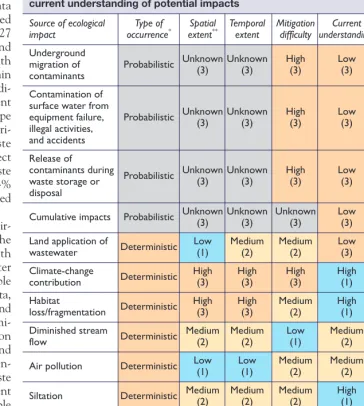Biotic impacts of energy development from shale: research priorities and knowledge gaps
Full text
Figure




Related documents
Study protocol; tumors underwent biopsy prior to neoadjuvant chemoradiation (nCRT); nCRT I: 50.4 Gy + 5-FU; nCRT II: 50.4 Gy + 5-FU/Oxaliplatin; tumor cells were isolated by laser
Because only those zones that display consistent horizontal laminar flow in a steady direction over a substantial time period (several hours) are considered, groundwater flow
the objective function coefficients three inputs must be added: the cost of the coal, the transportation cost to the generating unit, and the cost of processing the coal at
2001 Co-organizer and Facilitator, Workshop on “Dismantling Drug Trafficking Organizations” a three-day Workshop in Trinidad and Tobago by the Office of the Director of
Figure A1b is derived from quantile regression estimates at the worker-field-day level, of worker productivity on the worker’s picking experience, field life cycle, field fixed
It was noted explicitly in describing the scope of the Food Security and Nutrition Strategy document that it does not define the specific mechanisms by which public agencies, NGOs,
With 13,000 power industry professionals spread across 125 world-wide locations, Alstom Thermal Services supports its customers with competitive service solutions for
Intermodal transportation has enabled most firms to reduce supply chain costs, reduce lead times, engage in cheaper global sourcing of goods and materials, reduce downtimes
